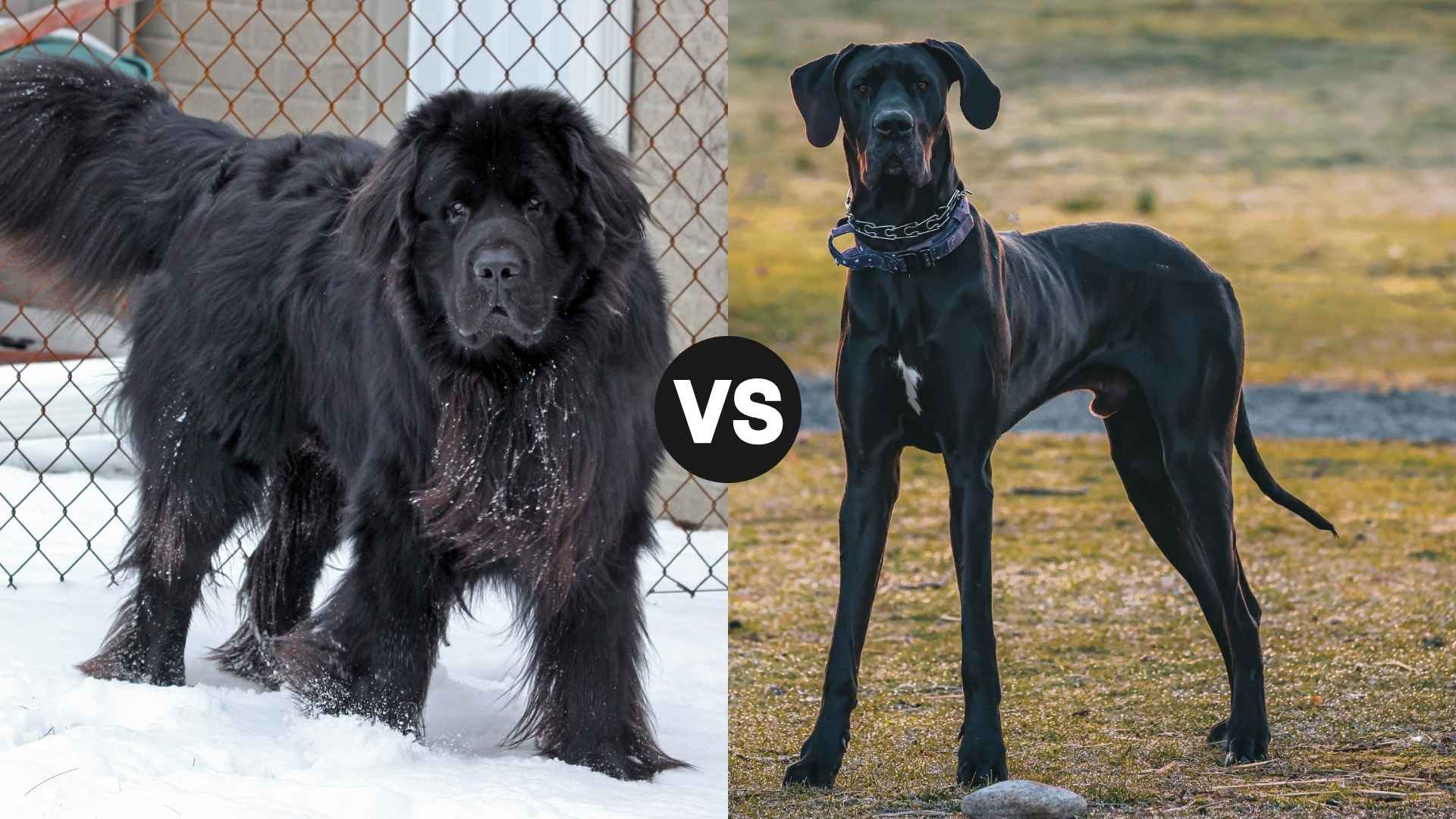When it comes to gentle giants in the dog world, few breeds stand out like the Newfoundland and the Great Dane. These two massive yet affectionate dogs each have unique qualities that make them beloved by families and dog enthusiasts alike.
The Newfoundland, lovingly known as the “Newfie,” hails from Canada, where it was bred to assist fishermen with heavy tasks. Naturally strong swimmers with calm, nurturing temperaments, Newfies are famously dubbed “nanny dogs” for their gentle way with children.
On the other hand, the regal Great Dane—often called the “Apollo of dogs”—has roots in Germany, originally bred for hunting wild boar. Despite its imposing size and dignified presence, the Great Dane is known for being affectionate, loyal, and great with families.
In this blog, we’ll dive into a detailed comparison of Newfoundland vs Great Dane to help you decide which majestic breed is the right fit for your lifestyle.
Newfoundland vs. Great Dane
Newfoundland vs Great Dane brings together two of the most impressive dog breeds in terms of size, strength, and gentle temperament. Originating from Newfoundland, Canada, the Newfoundland was developed as a working and water rescue dog, possibly from native dogs and Great Pyrenees brought by Basque fishermen.
These dogs are strong swimmers with webbed paws and a thick, water-resistant coat that enables them to handle cold waters with ease. Known for their calm demeanor, patience, and nurturing instincts, Newfoundlands—affectionately called Newfies—are often referred to as “gentle giants” and excel in family settings, especially around children.
In contrast, the Great Dane hails from Germany, where it was bred over 400 years ago for hunting wild boar and guarding estates. Despite its imposing stature and strong guardian instincts, the Great Dane is a playful, affectionate, and dependable family dog. Its massive size, square-jawed frame, and elegant build earned it the nickname “Apollo of dogs,” according to the American Kennel Club (AKC).

While their name suggests Danish origins, Great Danes are distinctly German in heritage. Today, they are prized companions known for their loyalty, friendliness, and ease of training, making them ideal for households that want a tall, confident, yet mild-mannered canine friend.
Great Dane vs. Newfoundland: Size and Weight Differences
When comparing the Newfoundland and the Great Dane, both are big dog breeds but differ in build. Male Newfoundlands typically weigh 130–150 pounds and stand up to 28 inches, while females are 100–120 pounds and up to 26 inches tall. Their broad, muscular bodies and thick double coats give them a stocky, rugged look—perfect for water work and heavy tasks.
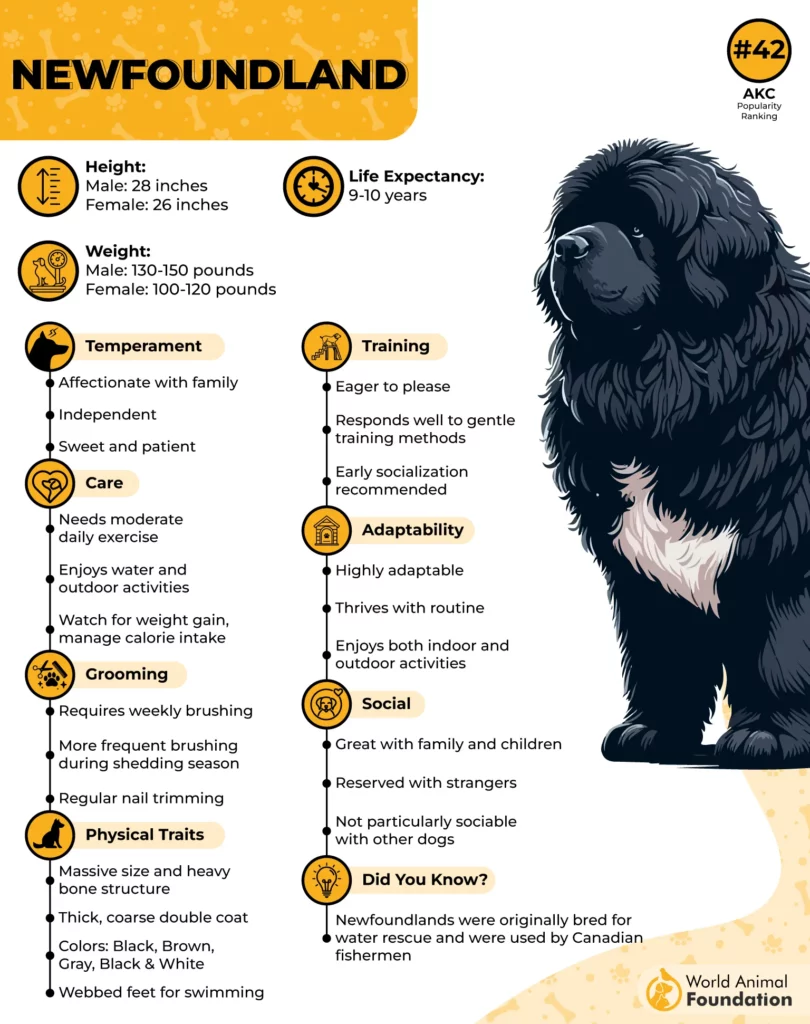
Great Danes are taller and more slender. Males stand 30–32 inches and weigh 140–175 pounds, with females slightly smaller at 28–30 inches and 110–140 pounds. Their lean, athletic frames and short coats highlight their graceful appearance. In short, Newfoundlands are shorter and bulkier, while Great Danes are taller with a more refined build.
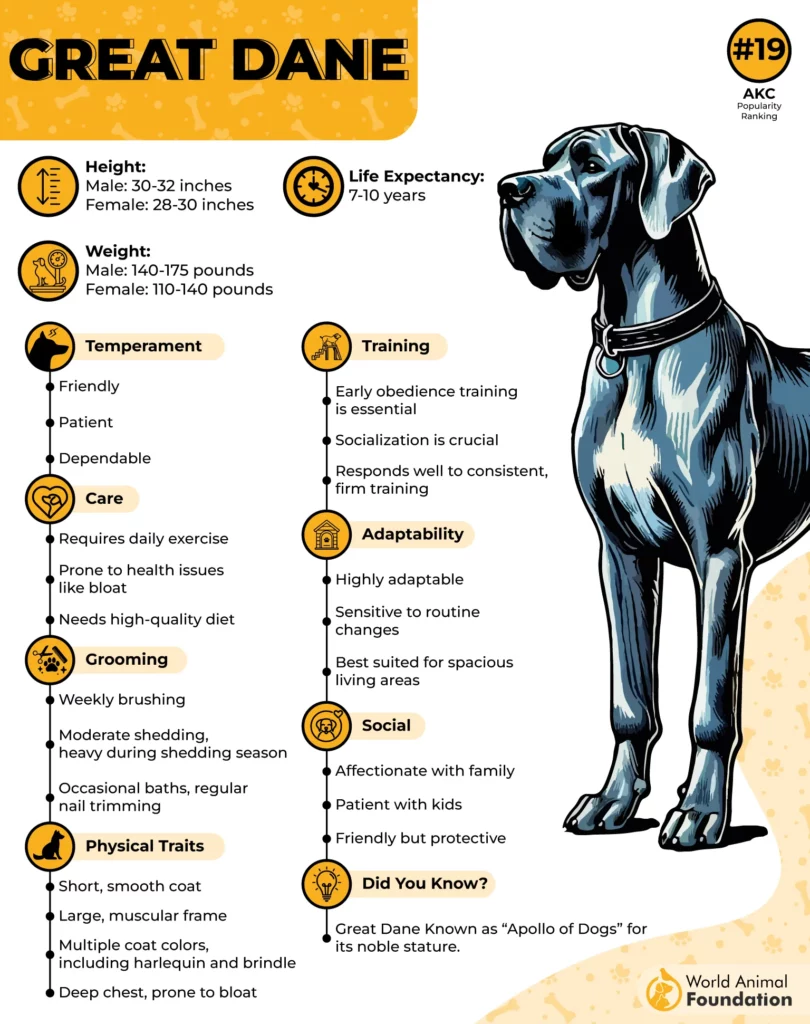
Great Dane vs. Newfoundland: Temperament and Personality Traits
When comparing the temperament, both breeds are affectionate and gentle and make excellent family companions, but their personalities have subtle differences. Newfoundlands are known for their nurturing nature and sweet disposition, often referred to as “nanny dogs” because of how well they get along with children, according to WebMD.
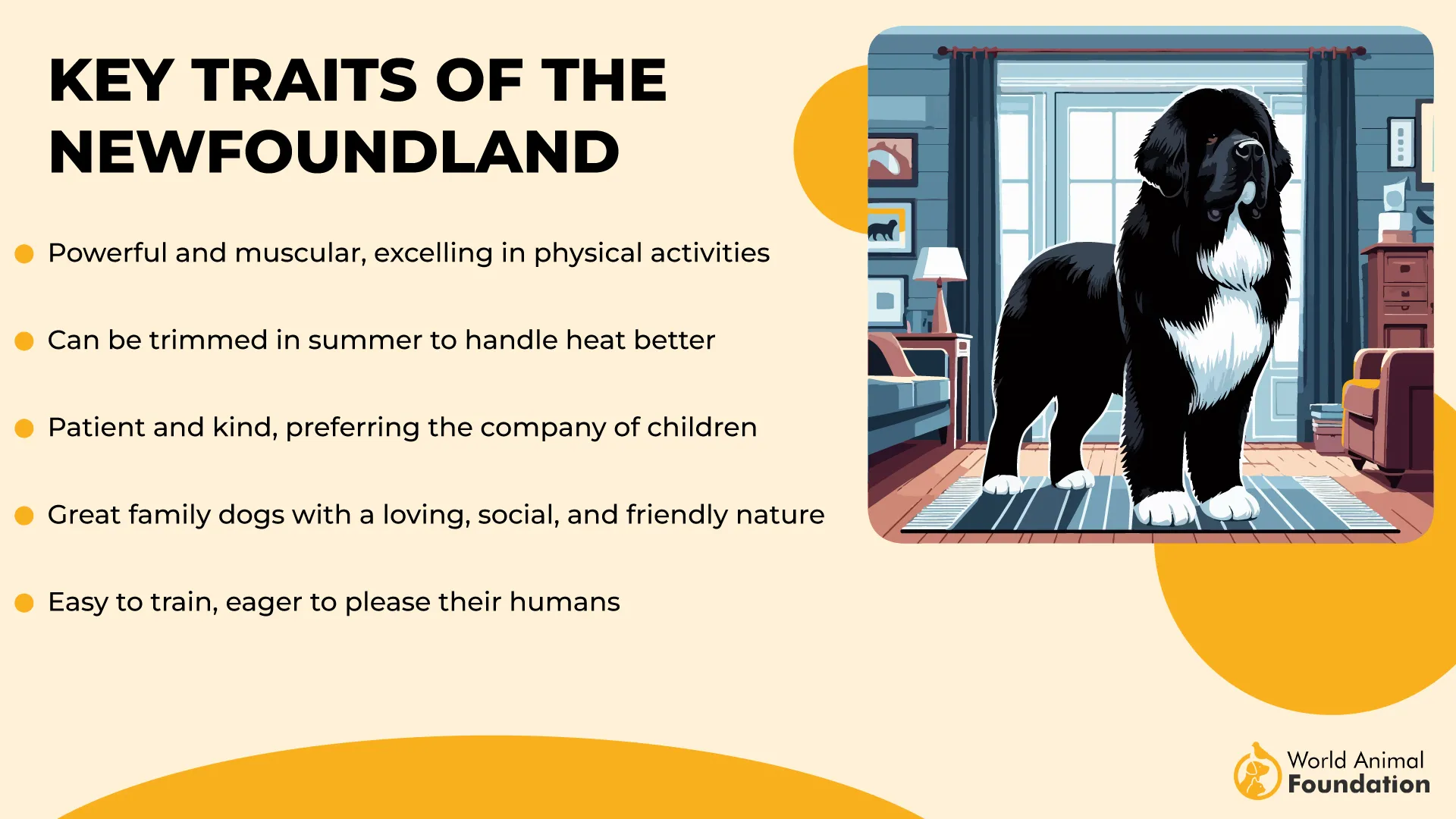
These are calm and loyal dogs, and eager to please, though they may respond a bit slowly to commands. They tend to be very trusting and sociable with both people and other pets, making them ideal for multi-pet households. While they do alert their families to strangers, their friendly demeanor usually takes over once they sense no threat. Though they need moderate exercise, they’re happiest when spending time with family and are especially drawn to children.
Great Danes also carry the “gentle giant” label with pride. They’re generally quiet, calm, and friendly—both with their families and with visitors. While they can be playful, they don’t require intense activity and are often content with short play sessions and a couple of long walks a day. Great Danes are protective without showing aggression, barking only when it matters, which makes them reliable watchdogs, according to Britannica.
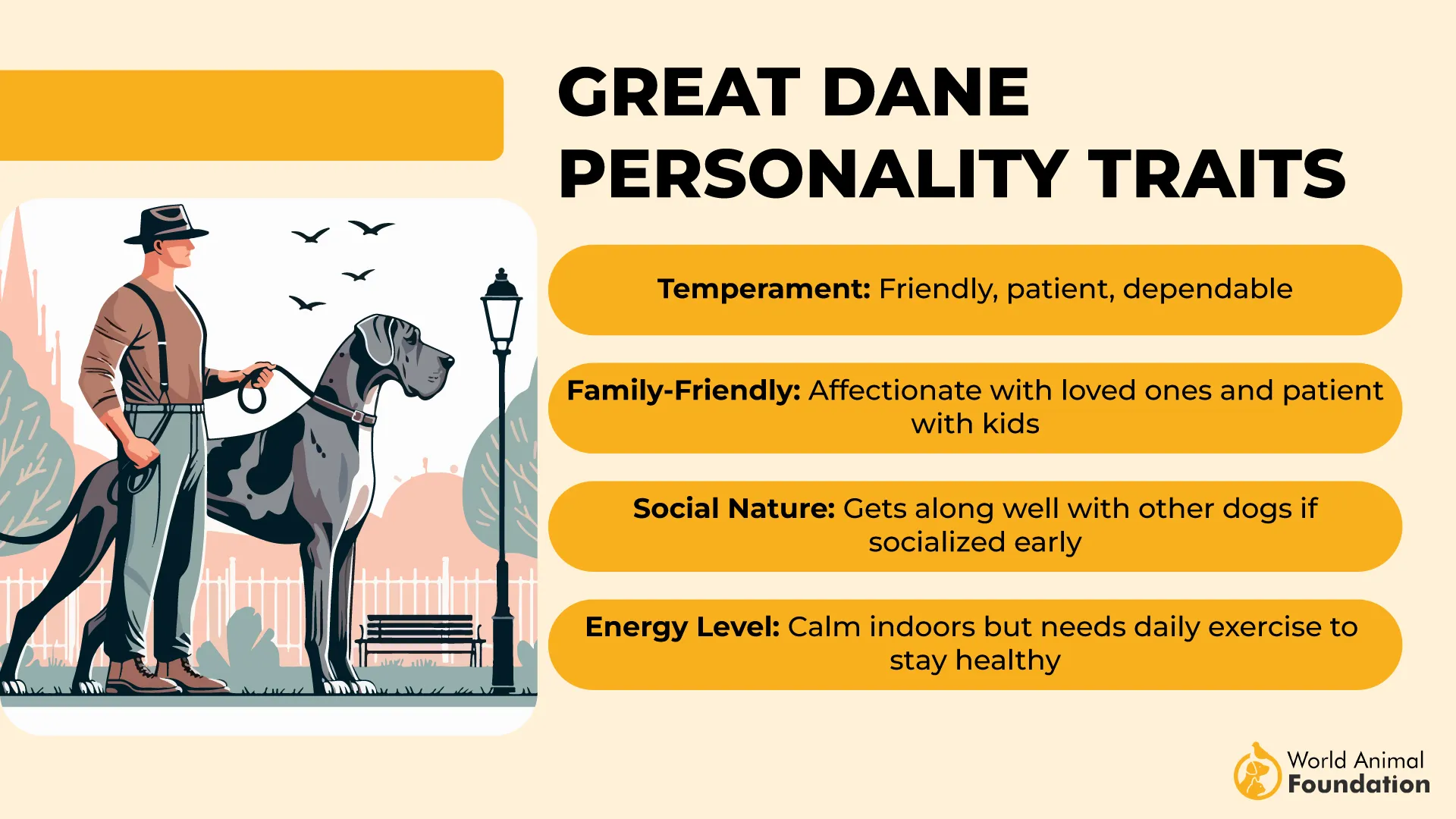
Like the Newfoundland, they are good with other dogs and tend to integrate well into family life. However, their sheer size can make them a bit overwhelming for small children or elderly owners. With early training and socialization, Great Danes become wonderfully loyal, low-maintenance companions who thrive in a loving home.
Great Dane vs. Newfoundland: Bite Strength and Jaw Features
Great Dane Bite Force: Approximately 240 PSI (pounds per square inch), delivering a strong and effective bite suitable for protection if needed.
Newfoundland Dog Bite Force: Estimated at around 225 PSI, powerful enough for working tasks but generally used gently due to their calm, non-aggressive nature.
Great Dane vs. Newfoundland: Lifespan and Common Health Issues
Newfoundland:
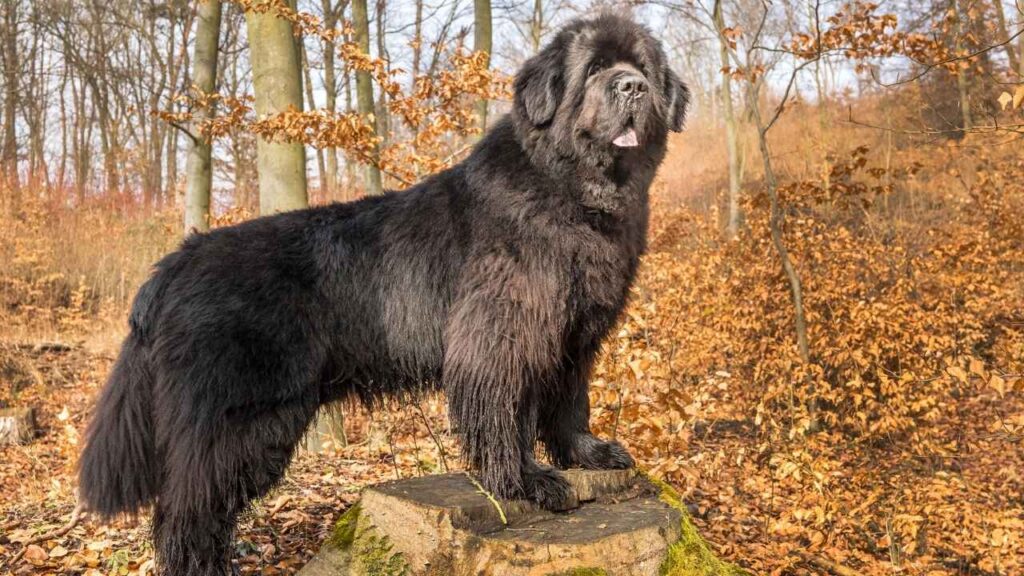
Average Lifespan: 9–10 years
Gastric Dilatation-Volvulus (GDV): Life-threatening bloat condition; common in deep-chested breeds like Newfoundlands. Symptoms include a swollen abdomen, retching, drooling, and collapse. Preventive gastropexy surgery is recommended.
Hip Dysplasia: A malformed hip joint leads to arthritis and mobility issues. Managed through weight control, joint supplements, and sometimes surgery.
Elbow Dysplasia: Abnormal elbow development causes limping and arthritis. Often requires surgical correction.
Bone Cancer (Osteosarcoma): Aggressive cancer common in large dog breeds. Lameness is a key symptom; treatment may involve amputation and chemotherapy.
Dilated Cardiomyopathy (DCM): A heart condition that causes poor heart muscle function and can lead to congestive heart failure. Symptoms include lethargy and labored breathing, states PetMD.
Great Dane:
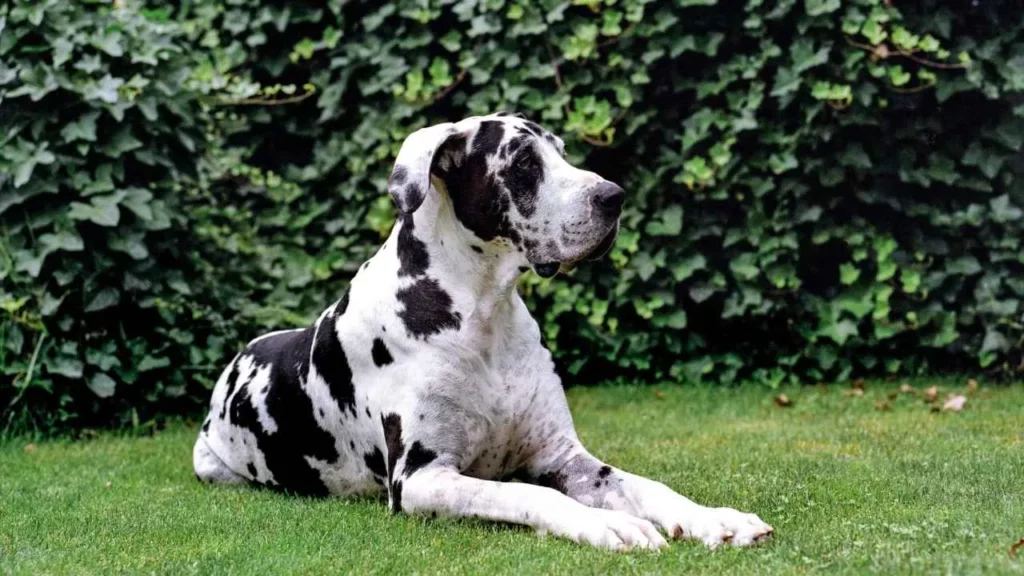
Average Lifespan: 7–10 years
Gastric Dilatation-Volvulus (GDV): A major health threat. The stomach fills with gas and twists, causing shock and death without emergency surgery. Preventive gastropexy is commonly performed during spay/neuter.
Hip Dysplasia: Inherited joint disorder leading to arthritis; should be screened for by breeders. Treated with joint care or surgery.
Wobbler Syndrome: A neurologic neck condition causing an unsteady gait and pain. Proper nutrition during puppy growth reduces risk.
Degenerative Myelopathy: A progressive spinal condition causing hind-end weakness and paralysis. Most common in seniors or overweight dogs.
Happy Tail Syndrome: Repeated injury to the tail tip from wagging; may require medical treatment or tail amputation.
Dilated Cardiomyopathy (DCM): Common in Danes; leads to heart failure as the heart loses pumping strength, states PetMD.
Great Dane vs. Newfoundland: Energy Levels and Daily Activity Needs
When comparing the Newfoundland vs the Great Dane in terms of energy levels and activity needs, both breeds lean toward the low-to-moderate energy spectrum, but their preferences differ slightly. Newfoundlands are calm and steady, requiring only about 30 minutes of moderate exercise daily.
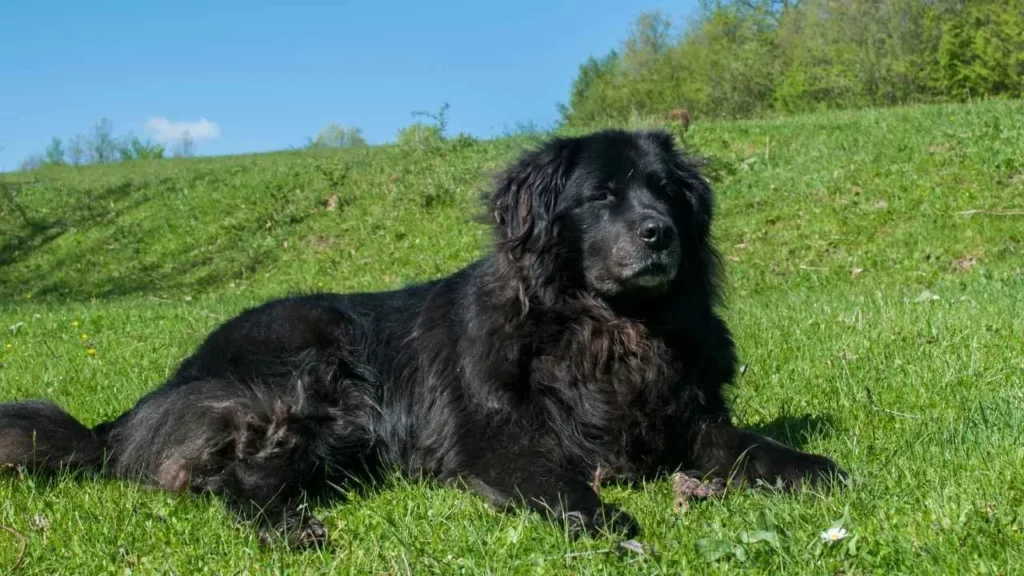
They thrive on outdoor activities like swimming and cart-pulling, especially in cold climates, and they enjoy tasks that engage both body and mind, such as water rescue or nose work. Though they’re not hyperactive, Newfies benefit from consistent activity to maintain health and prevent boredom, and they’re happiest when spending time outdoors with their family.
Great Danes may appear laid-back and lazy, but they do need regular physical activity to stay fit. Daily brisk walks two to three times a day usually meet their exercise needs, and they can make great hiking or jogging partners, once fully grown, around age two, to protect developing joints. Because of their deep chests, it’s crucial to avoid vigorous play near mealtimes due to the risk of bloat.
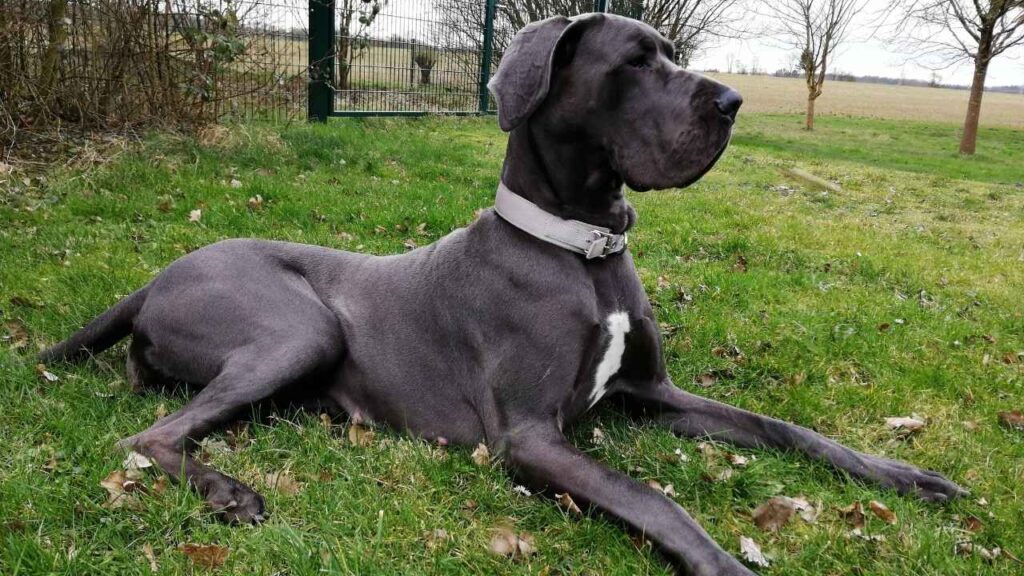
Great Danes enjoy structured activities like agility, obedience, and even flyball, but their curious noses make leash use and fenced areas essential. Overall, while both breeds are relatively low-maintenance when it comes to energy, the Dane tends to be a bit more adventurous and needs a bit more structured physical engagement.
Great Dane vs. Newfoundland: Nutrition and Weight Control
Both the Great Dane and Newfoundland need well-managed diets due to their large size and fast growth. Newfoundlands generally thrive on an AAFCO-approved diet, though vets may recommend supplements based on health needs. Portion control is essential to avoid obesity and joint strain, and treats should be limited to 10% of daily calories. Regular vet checkups help ensure proper nutrition throughout each life stage.
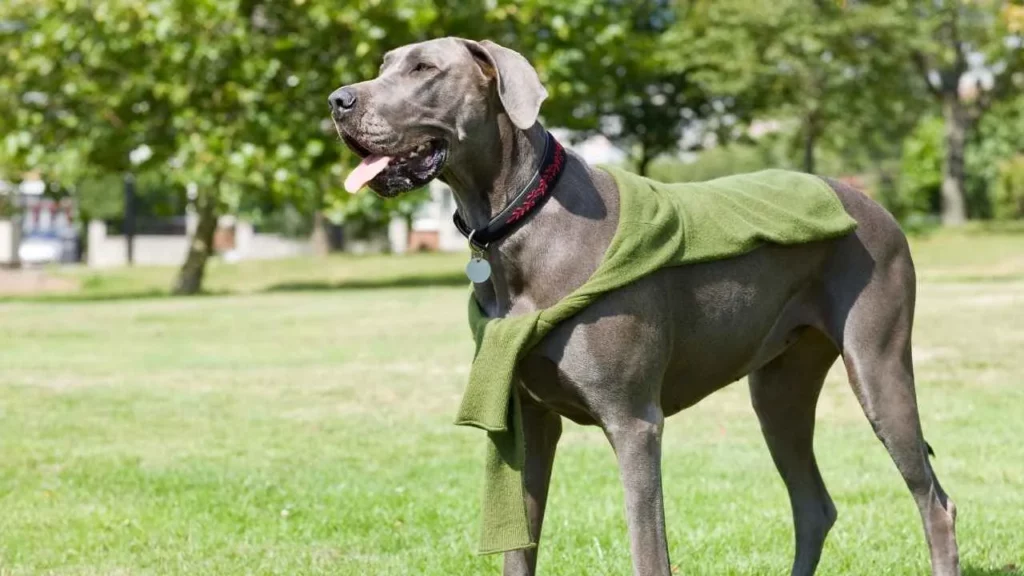
Great Danes are especially vulnerable to orthopedic issues if overfed or allowed to grow too quickly. Puppies should eat 3–4 small meals daily, while adults do best with 2 or more meals to help prevent bloat. A large-breed puppy formula with controlled calcium, phosphorus, and vitamin D supports healthy growth. Joint supplements and routine vet visits are also recommended to maintain ideal weight and prevent health problems.
Great Dane vs. Newfoundland: Grooming Needs and Allergy Concerns
When it comes to grooming, the Newfoundland demands more effort than the Great Dane due to its thick, water-resistant double coat. A Newfoundland requires weekly brushing with a slicker brush and long-toothed comb to prevent mats and remove dead hair, which increases to daily grooming during seasonal sheds, typically twice a year.
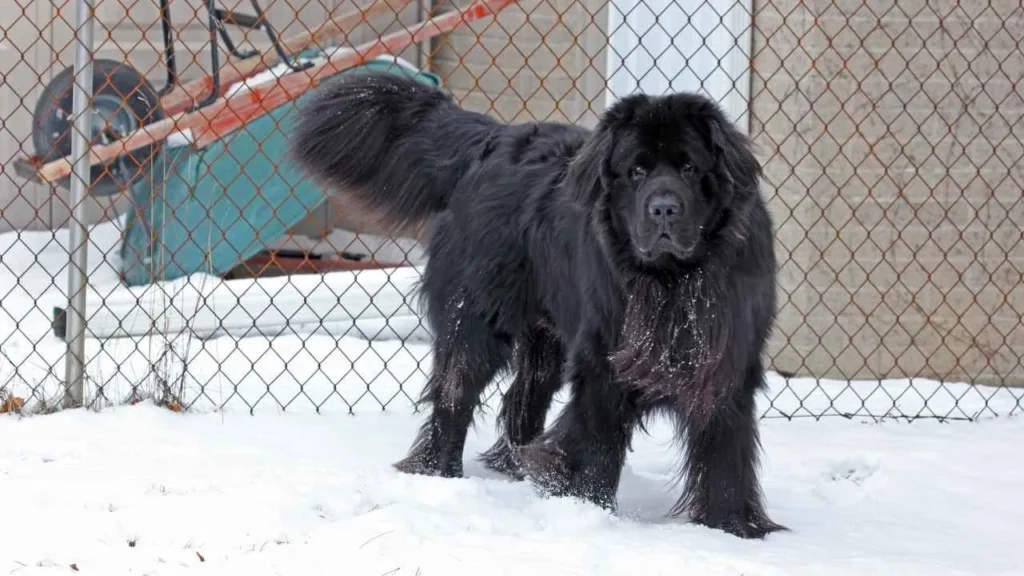
Spayed or neutered Newfoundlands tend to shed year-round and may need brushing several times a week. Regular nail trimming is essential to avoid joint strain or paw discomfort. Their dense coat also traps debris and moisture, so frequent checkups and occasional baths are recommended to maintain skin and coat health.
In contrast, the Great Dane is relatively low-maintenance with its short, smooth coat. Weekly brushing with a rubber mitt, hound glove, or bristle brush usually keeps shedding under control, though shedding intensifies once or twice a year, warranting daily grooming during that time. Great Danes only need occasional bathing unless they get particularly dirty.
As with Newfoundlands, regular nail trimming is important for their comfort and mobility. While both breeds shed, the Newfoundland’s dense fur makes it less allergy-friendly. In contrast, the Great Dane, despite being a heavy shedder for its coat type, may be slightly more tolerable for allergy-sensitive households due to less dander-trapping fur.
Conclusion
When it comes to choosing between the Newfoundland and the Great Dane, both breeds offer a loving, loyal presence, but they suit different lifestyles. Newfoundlands are calm, patient, and great with children and other animals, making them ideal for families with space and time for grooming. Great Danes, though a bit more stubborn, require minimal grooming and fit well into homes looking for a low-maintenance watching companion.
Both are working dogs with gentle hearts, but their needs—from food and exercise to handling potential chewing and joint issues—can be a challenge if overlooked. If you have the space, commitment, and affection for one of these giants, either breed can be a wonderful addition to your house—just don’t expect them to act like a Golden Retriever or a lapdog. These dogs were made to stand their ground, not chase after trends.


